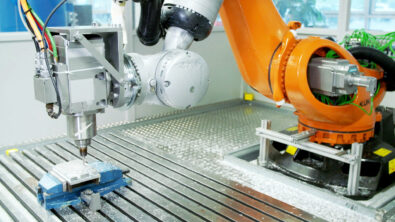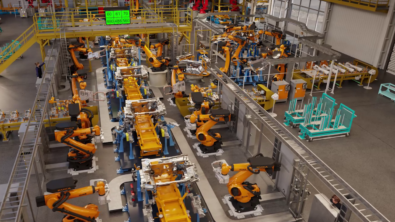Talking Aerospace Today – Automating the Mundane Part Two – Summary

The Talking Aerospace Today podcast has released its second episode on automation within the journey of digital transformation maturity, beginning with how aerospace and defense (A&D) companies can automate mundane tasks.
In the first episode, Todd Tuthill, Vice President of A&D Industry at Siemens Digital Industries Software, discussed why the A&D industry needs automation to improve its engineering processes. This new episode reiterates how automating mundane tasks saves time and accelerates those processes, while also exploring where companies can begin automation and emphasizing how to tackle the cultural obstacles that could prevent its adoption.
Meeting the deadline
As discussed in the previous episode, automating the mundane can save engineers significant amounts of time. Todd knows this firsthand when his engineering team at a previous job had to create multiple test scripts and test reports that would help validate a commercial aircraft control system. The team worked long hours trying to complete the validation process by the deadline requested by the customer, but still risked missing it due to the sheer amount of data and documentation they needed to create and process.
Instead, Todd and his team decided to build models that would create the test scripts and reports for them, dramatically cutting down the time it took to process them. By creating those models, they were able to hasten the validation process and were able to get the control system ready for the aircraft on time. If they had not made that decision, it was likely they would not have met the deadline, failing their customer and harming their company’s reputation.
Choosing where to begin
When asked where companies could start automating the mundane if they had not already begun, Todd recommends they do an audit of where their engineers spend most of their time. Odds are the audit would reveal repetitive dull tasks such as hunting for design data or creating test scripts and reports like the ones Todd and his team did. Automating these types of tasks takes the responsibility off the hands of engineers and lets them focus on more important work, accelerating engineering processes and granting more time to innovate.
This not only benefits engineering processes themselves, but also helps prove the technology’s feasibility. These initial mundane tasks are typically small and can be considered quick wins companies can achieve before increasing their automation’s scale. By demonstrating automation’s prowess early, knowledge and trust of the technology can be built sooner, making it easier to implement for larger, more complex tasks down the line.
Changing the culture
Building trust in automation is especially crucial in ensuring its adoption, as there are likely to be people who oppose it within the A&D industry. These people would not be at fault for their concerns. The A&D industry has always written documentation by hand, and for all that time, it has been the only way to do such tasks. Delegating these tasks to automation is a substantial change, so the presence of people uncomfortable with such a change is only natural.
Tackling the cultural changes brought along by automating the mundane is just as important as tackling the technological changes. If companies want to get their people on the side of automation, Todd says, they should be patient and talk to detractors, trying to see things from their perspective. By understanding where they are coming from, companies can better address their concerns and help them see the benefits automation can bring.
Elevating automation
Automating the mundane provides A&D companies the opportunity to overcome common obstructions in the engineering process and multiply the impact of engineers. Getting people onboard may be tricky, but as long as companies take these concerns seriously and keep a focus on culture, these detractors can be persuaded, and the industry can reap the full benefits of the technology. With enough investment, automation can eventually be implemented at grander scales and take on more complex tasks that were once thought possible only by the hands of human engineers.
Be sure to listen to the full episode or read the transcript, and stay tuned to learn how to automate complex tasks with authoritative automation.
Siemens Digital Industries Software helps organizations of all sizes digitally transform using software, hardware and services from the Siemens Xcelerator business platform. Siemens’ software and the comprehensive digital twin enable companies to optimize their design, engineering and manufacturing processes to turn today’s ideas into the sustainable products of the future. From chips to entire systems, from product to process, across all industries. Siemens Digital Industries Software – Accelerating transformation.


